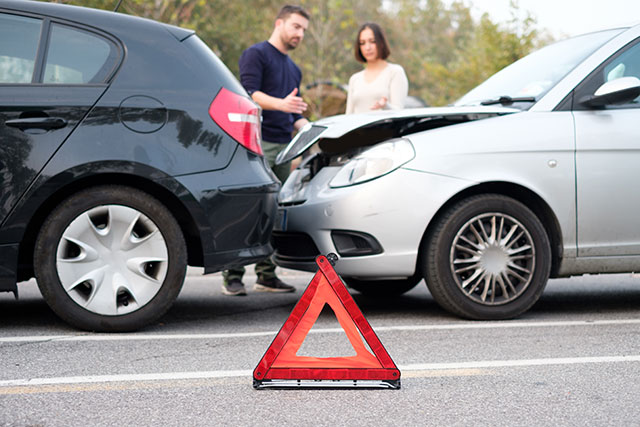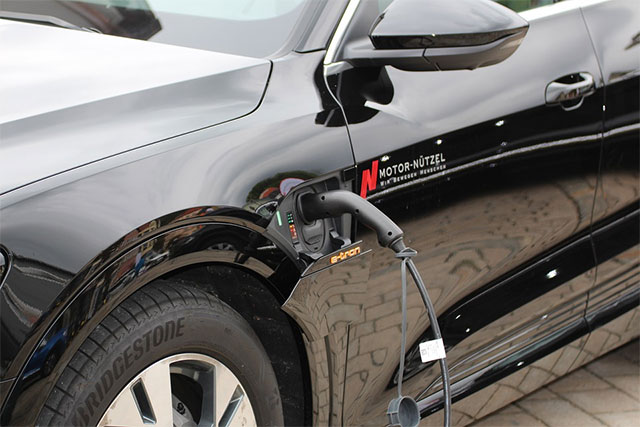New Jersey is one of those states which follows a ‘no-fault’ car insurance system with some modifications. In a ‘no-fault’ car insurance system, the insurance provider will pay for the medical treatment and economic losses that may have been suffered by the injured person regardless of who was at fault for the car accident. But this is restricted to the dollar limits provided in the coverages of their ‘no-fault’ or personal injury protection (PIP) car insurance policy.
Table of Contents
Ways To Calculate A No-Fault Car Accident Claim
The catch here is that the injured person won’t be able to claim reimbursement or damages for other injuries and losses such as persistent pain and suffering long after the car accident, or other non-economic losses. They’re not covered by their ‘no-fault’/PIP insurance. They can still claim these things outside of their insurance coverage and pursue legal action with the help of a car crash attorney, but the claims have to fall under the exceptions provided by law.
Losses Covered By ‘No-Fault’ Insurance
The typical ‘No-Fault’ car insurance policy in New Jersey gives either a ‘Basic’ or ‘Standard’ option. Your insurance provider will pay for this when you file a car accident claim. The ‘No-Fault’ or Personal Injury Protection (PIP) usually has the following coverages:
- The ‘No-Fault/PIP’ car insurance will pay for the reasonable expenses of your medical treatment. This includes payment for the use of any medical equipment needed to treat the injuries sustained from the car accident (this is a built-in feature of both ‘Basic’ and Standard’ car insurance policies).
- Reimbursement for any lost wages/salaries/income as a result of having to miss work because of injuries suffered from the car accident.
- If you’ve been left unable to do specific tasks that you were previously able to do as a consequence of the car accident, you’ll receive payment for the cost of acquiring the services you’ll be needing. These services will provide assistance in doing household chores or taking care of your family members.
- Payment of ‘death benefits’ and ‘funeral benefits’ if someone died during the car accident.
When you purchase your car insurance policy, some insurance companies in New Jersey will give you the option to pay lower PIP premiums. When you’re involved in a car accident, the tradeoff is that you’ll have to pay high deductibles before the PIP coverage kicks in. Another option that
would allow you to pay lower premiums would be to tick off your health insurance provider as the primary source of medical treatment coverage when a car accident happens. You also have the option to select ‘Special Automobile Insurance Policy’’ if you meet the qualifications for Federal Medicaid eligibility.
Computation Of ‘No-Fault’ Coverages
The computation for the medical expenses and hospital treatment are quite straightforward. The injured person will be reimbursed by their insurance provider for all the expenses and fees that they paid to the hospital or the clinic where they received treatment. They would be reimbursed up to the extent of the dollar limit indicated in their ‘No-Fault’/PIP policy.
Similarly, computation for the lost wages or income opportunities is also quite direct. The injured person will be reimbursed for the number of wages or salaries that they won’t be paid due to their absence from work after sustaining car accident injuries. Their hourly or daily rate will usually be multiplied by the number of work hours or workdays that they missed because they couldn’t report for work.
‘Limited Right To Sue’ I New Jersey
Car owners who hold a ‘Basic’ policy will be paid for the medical expenses and economic losses they incur after a car accident, as long as these are covered by their policy. As previously mentioned, the dollar limit of their coverage would be the limit indicated in their PIP coverages. They’ll be paid regardless of who was at fault for the car accident. This is why it’s called a ‘No-Fault’ or PIP car accident insurance.
The injured person can sue the driver who was at-fault if the injuries are beyond the scope of coverage of their PIP insurance. But this right to sue is limited if you only have the basic policy. The injured person can only sue if the injuries suffered involve:
- Death of the driver or passenger
- Loss of a body part
- Significant physical disfigurement
- Significant facial scars
- Miscarriage due to the accident
- Fractured and/or displaced bones
- A permanent injury which can’t be returned or restored to its normal state
The injuries suffered by the person covered by the policy have to fall under any of these instances before they acquire a right to sue. This is the limitation of their right to sue under New Jersey laws. They can sue for payment of damages that aren’t covered by their basic PIP policy. This can include pain and suffering damages and other non-economic losses.
Computation For Damages In ‘Limited Right To Sue’
In terms of the claims that the injured person will pursue through their ‘Limited Right To Sue,’ they can be reimbursed for their pain and suffering and other non-economic losses as long as they meet the legal threshold.
If they’re able to prove that they fell under these threshold circumstances and that they did incur pain and suffering or other non-economic losses, they can be awarded compensation for damages by the court. They would be considered a ‘third-party’ claimant to the insurance coverages of the person who was at fault. They can also sue the person at fault directly to pay for the damage they incurred.
The courts use different methods for arriving at the amount that would be paid to the injured person as damages, and these include:
Multiplier Method: The first is known as the multiplier method. In using this method, the total amount of expenses and losses incurred by the injured person are added up. The sum is then multiplied by a multiplier assigned by the court to arrive at the total damages to be paid to the claimant. In the traditional multiplier method, the insurance companies or the courts use the number three as a multiplier. The contemporary multiplier method has a more nuanced system that ranges from one to five.
Per Diem or Per Day Method: The second is known as the per diem or per day method. In using this method, the court will determine a fixed amount that would be used as the estimate of the pain and suffering or non-economic loss that a person suffers each day. This amount would then be multiplied by the number of days that the person has been suffering or incurring non-economic loss.
Conclusion
New Jersey has a ‘No-Fault’ car insurance system. Insurance companies will pay for the medical treatment and loss of wages incurred by the injured person to the extent of the coverage provided in their insurance policy. Computation for this is based on their medical expenses and actual lost wages. They can only claim pain and suffering and non-economic damages only for those injuries specifically allowed by law. They can do this by pursuing legal action. This is computed using the multiplier method or the per diem method.















